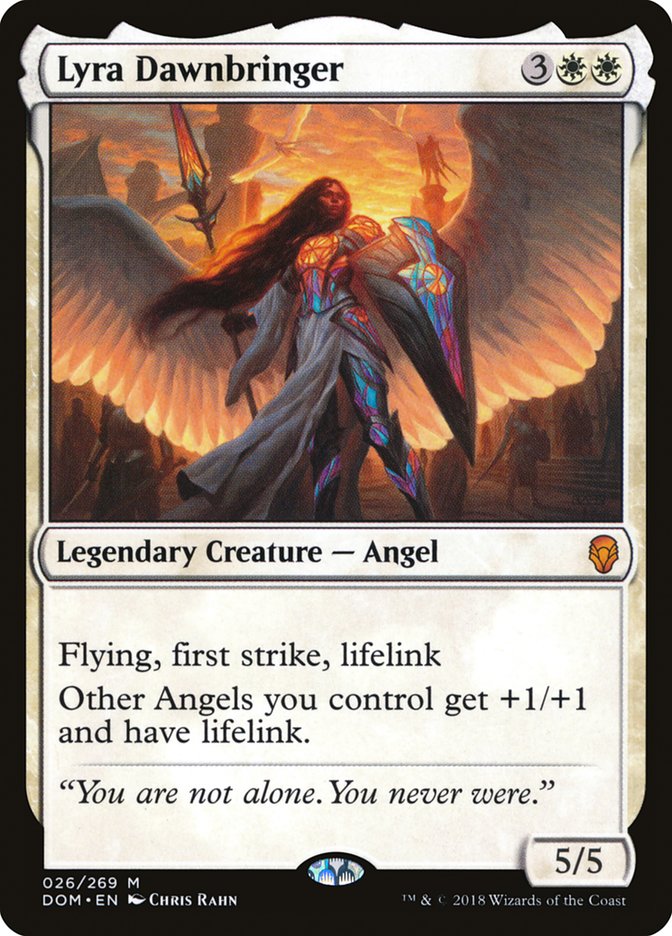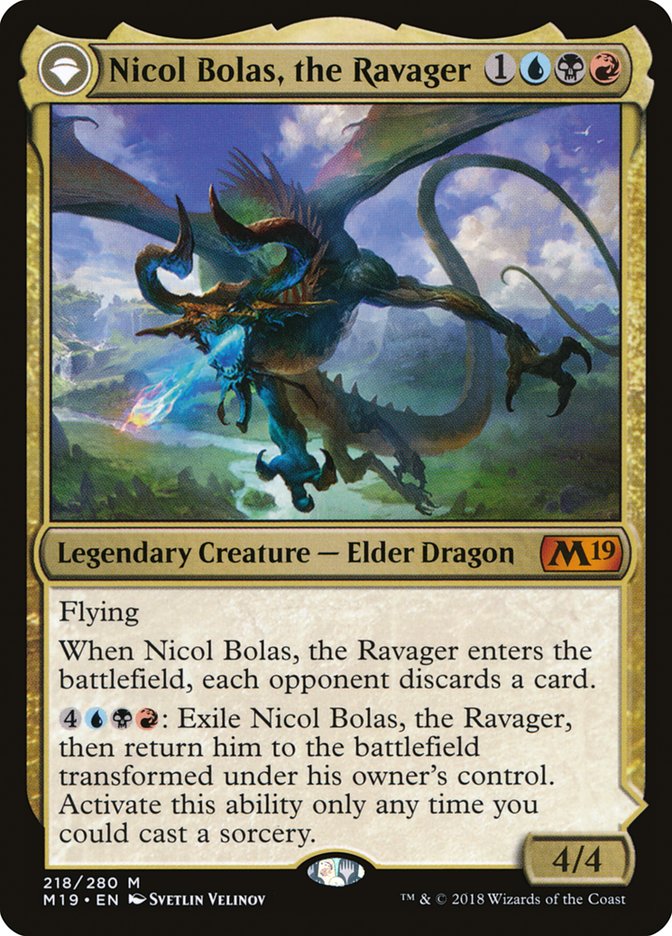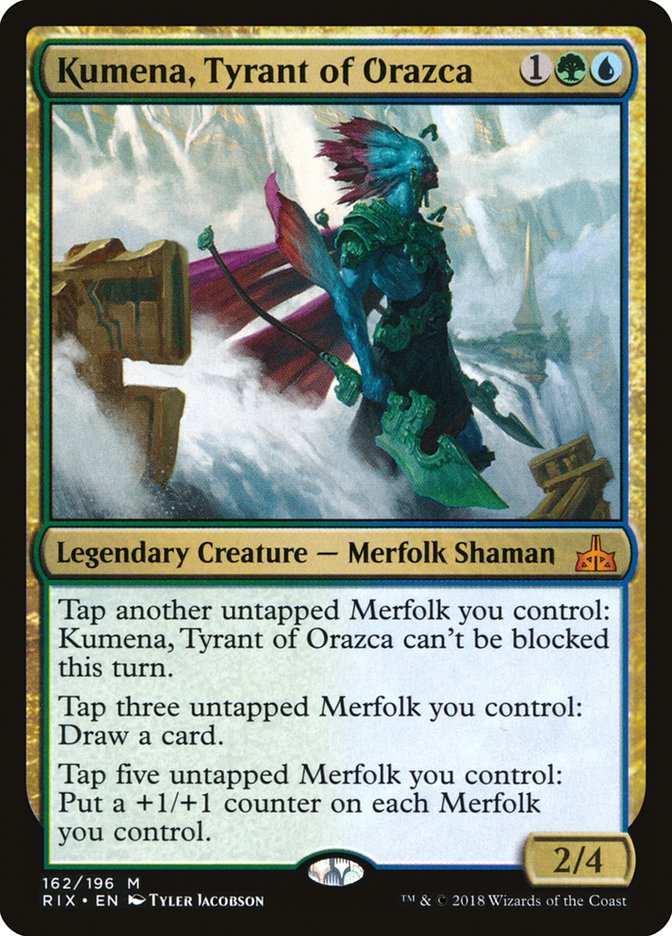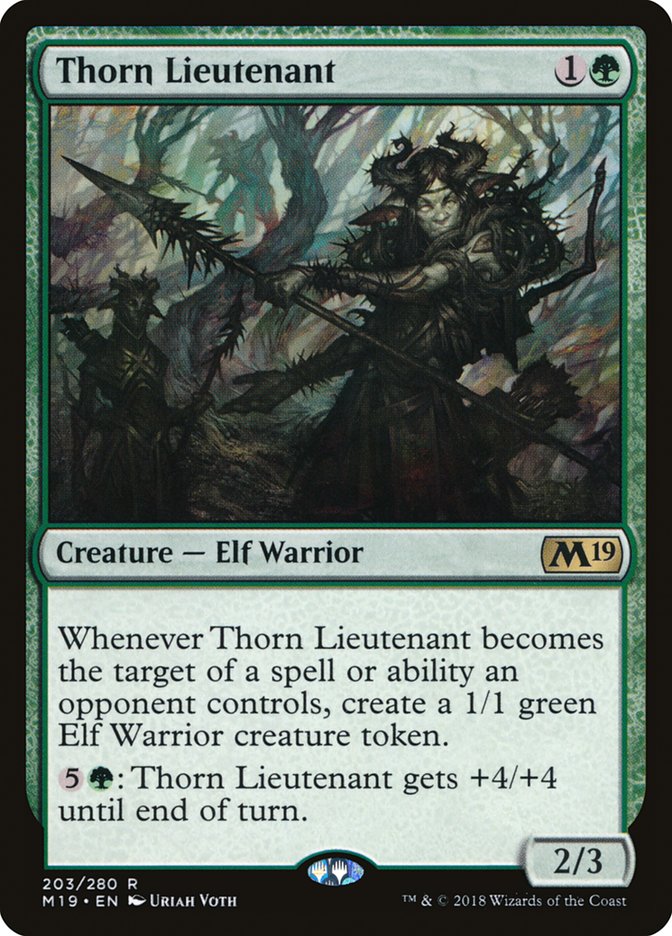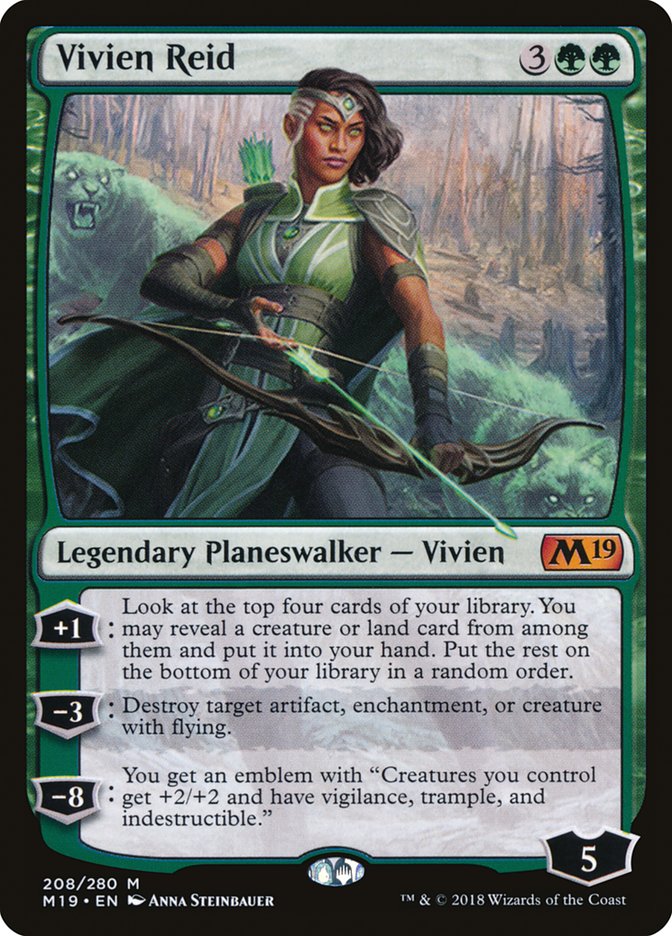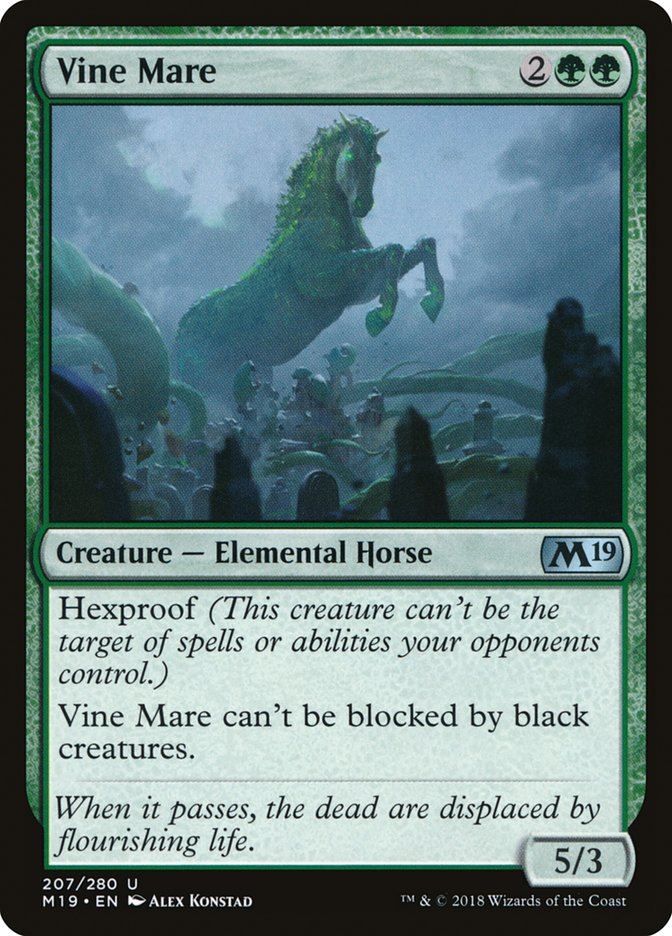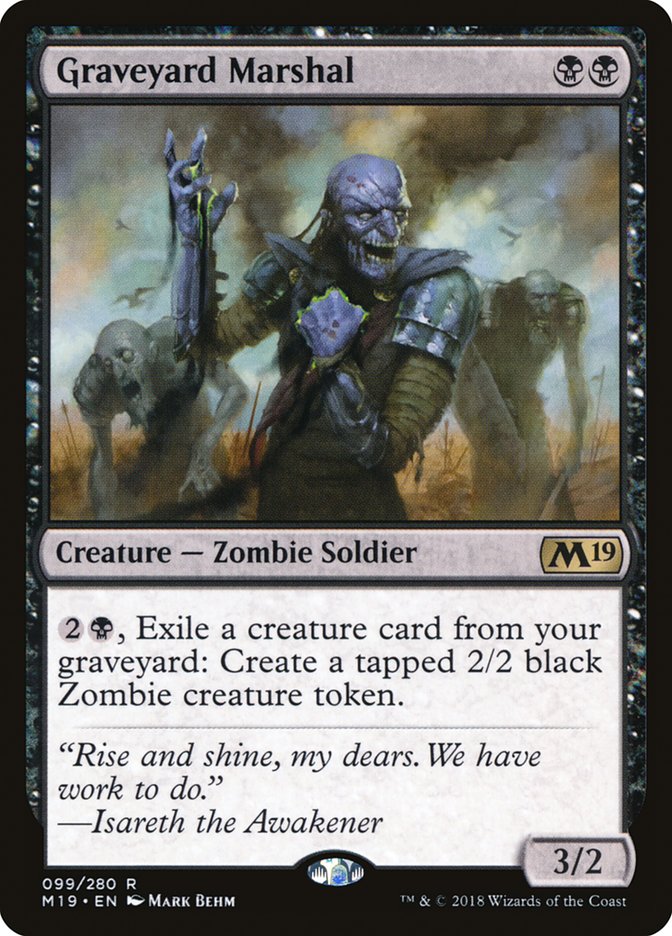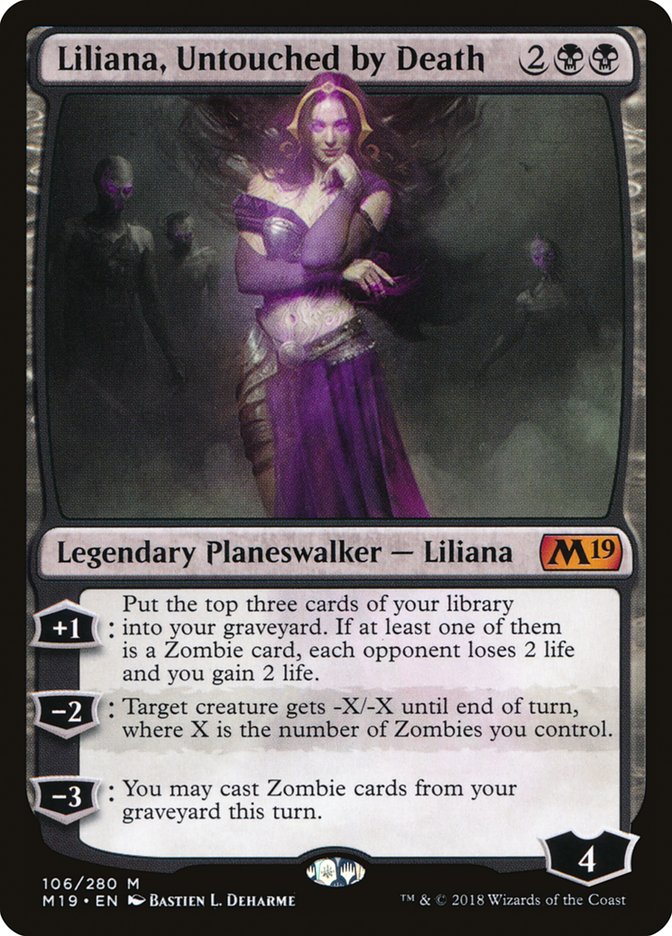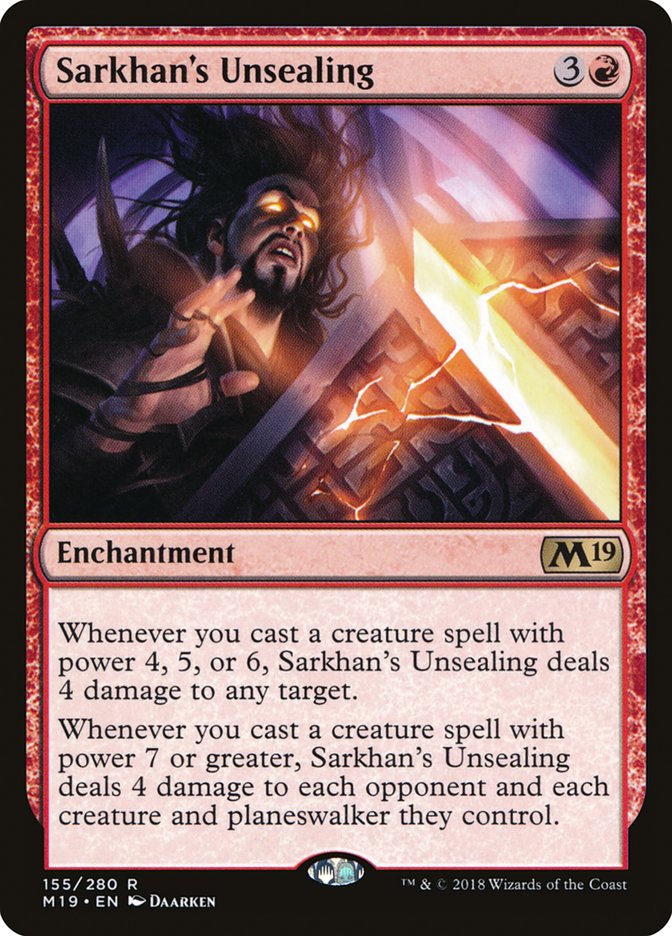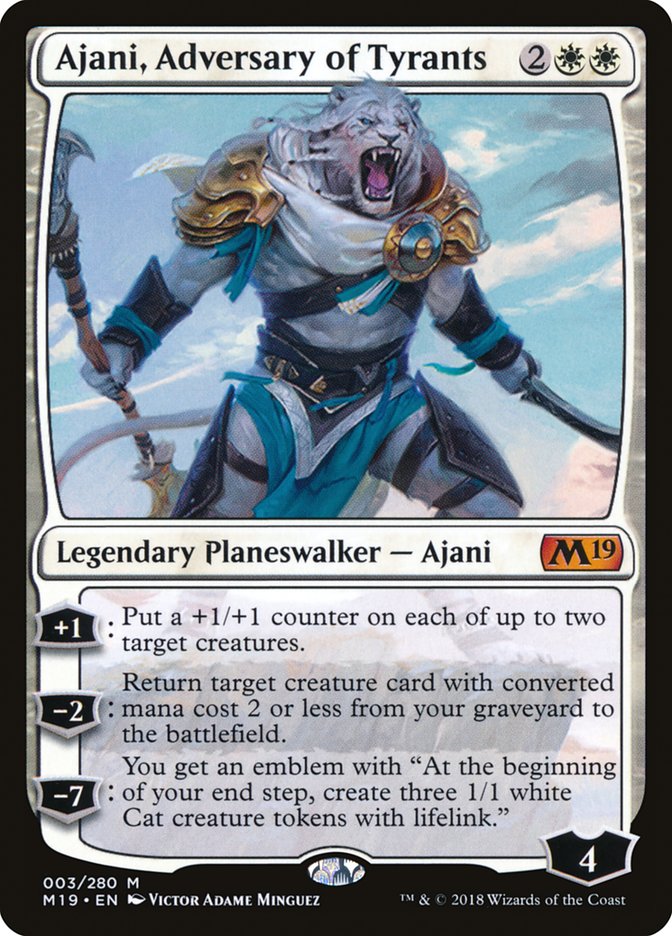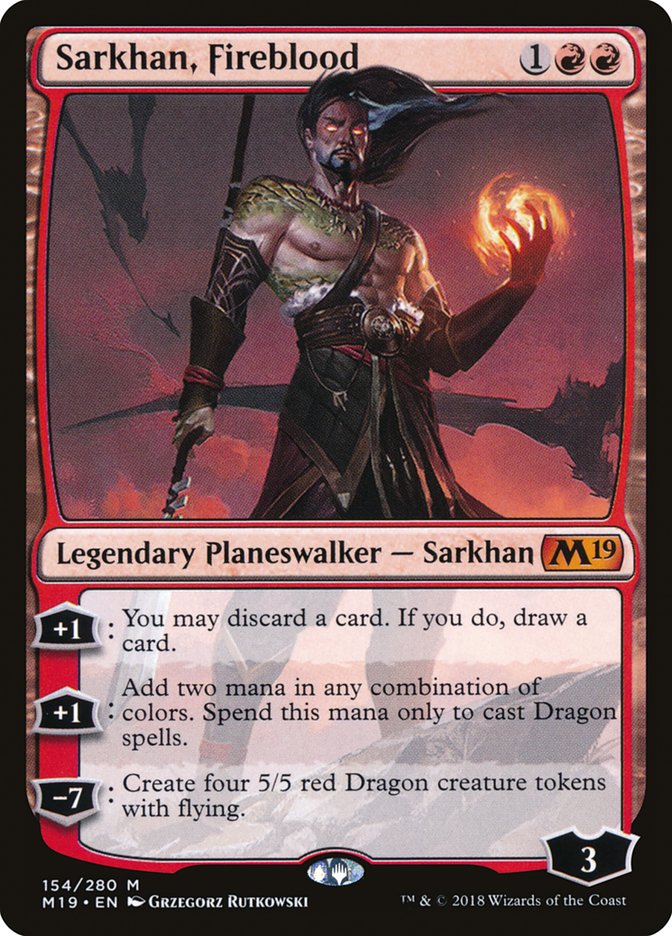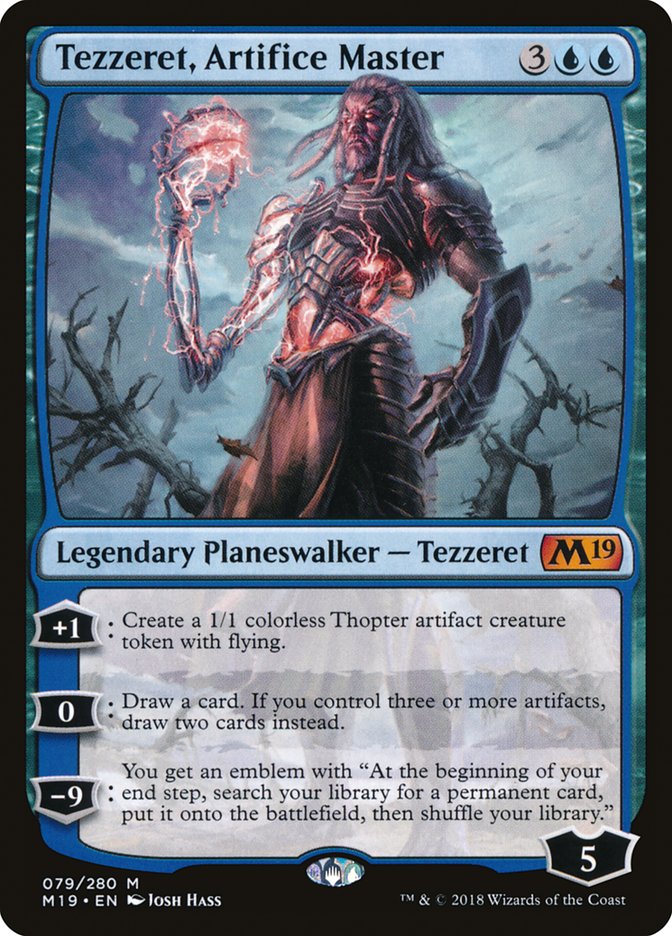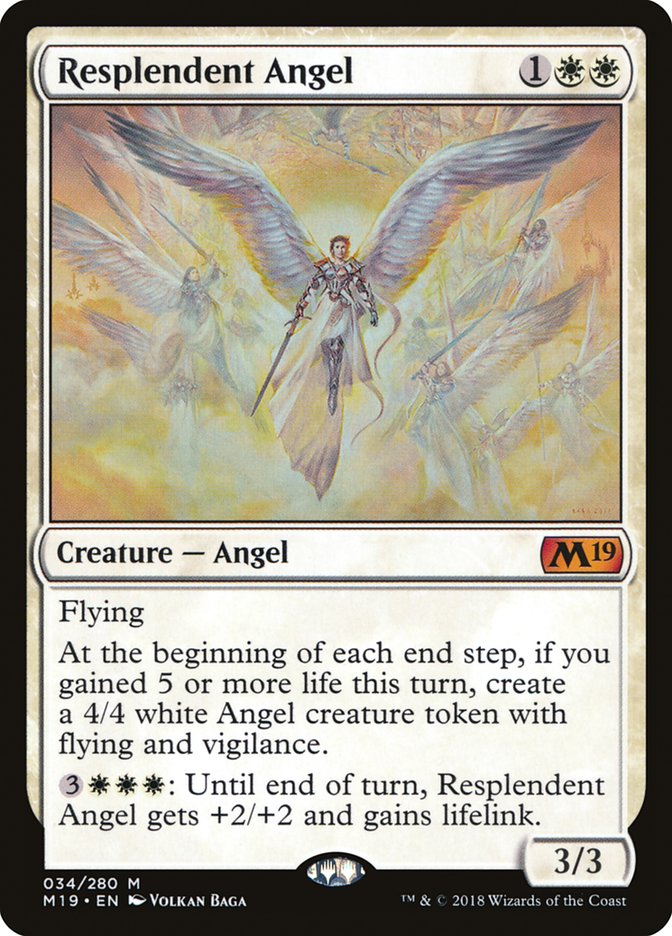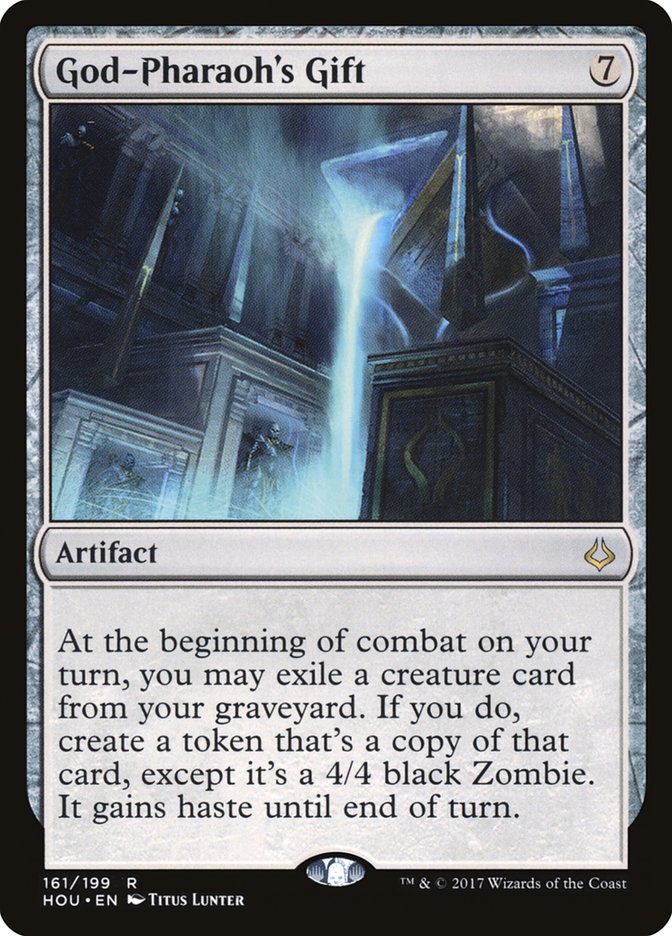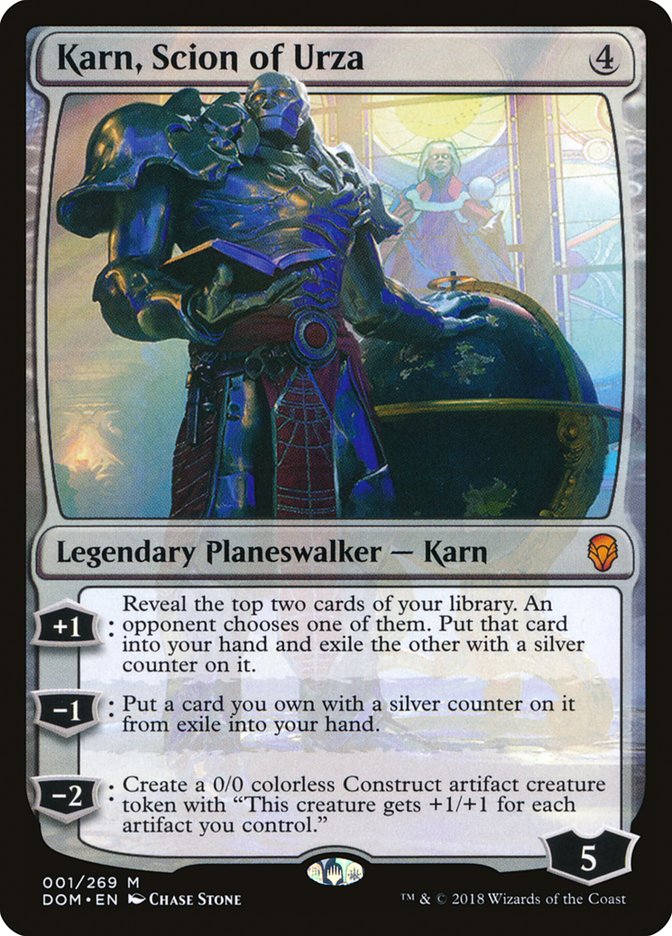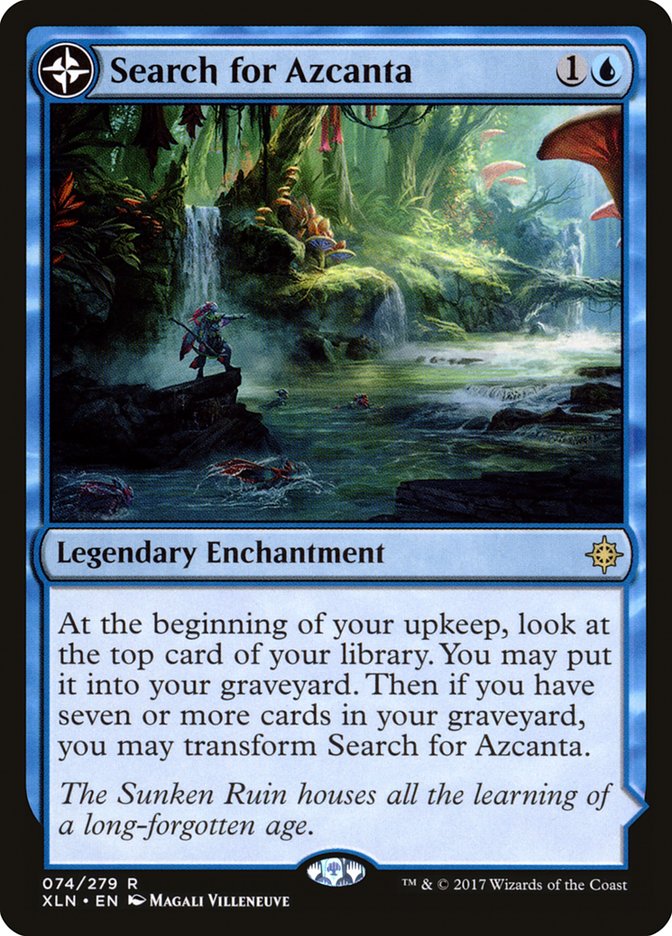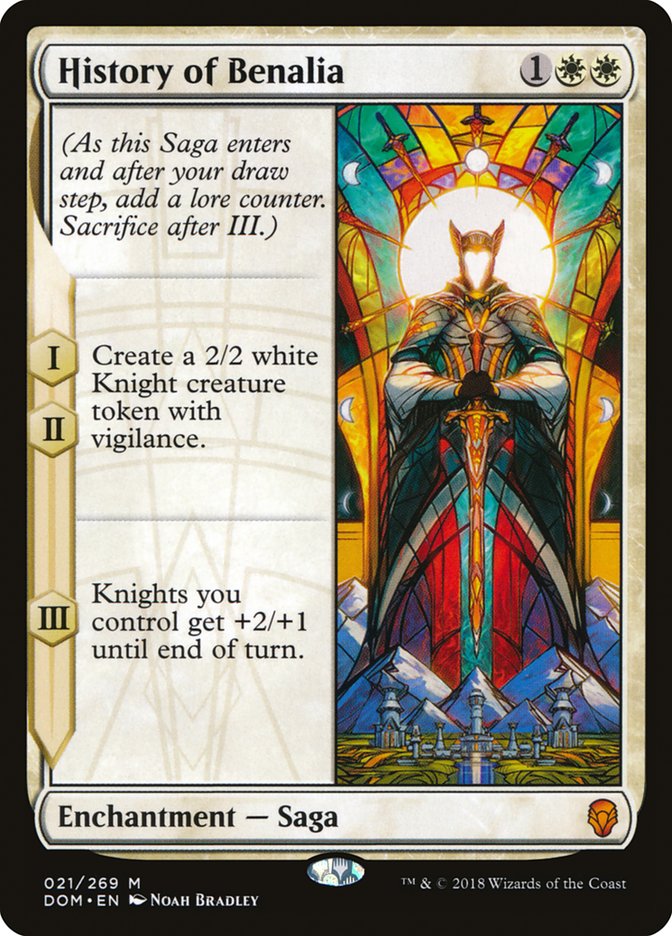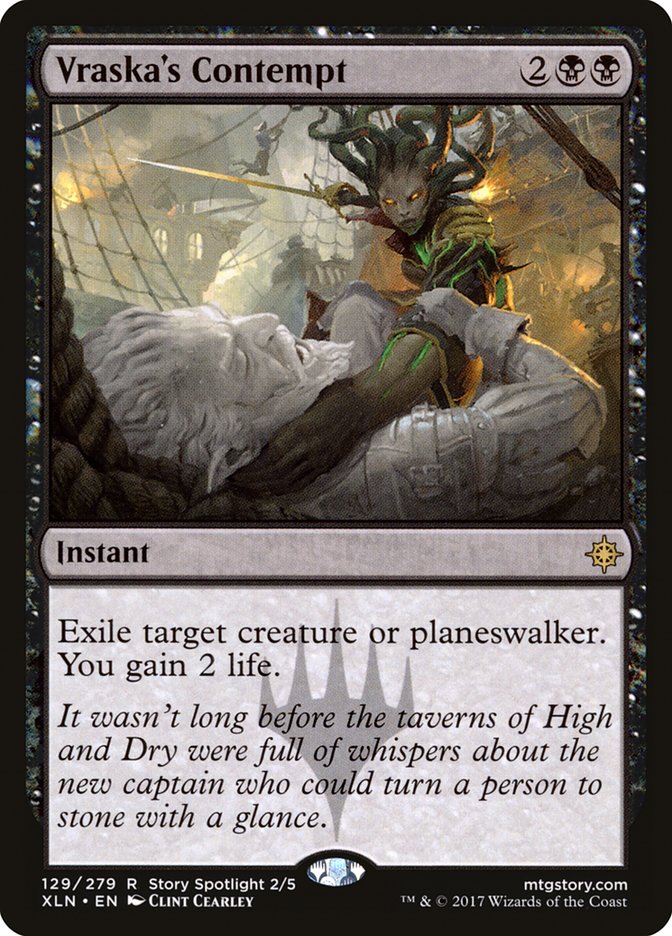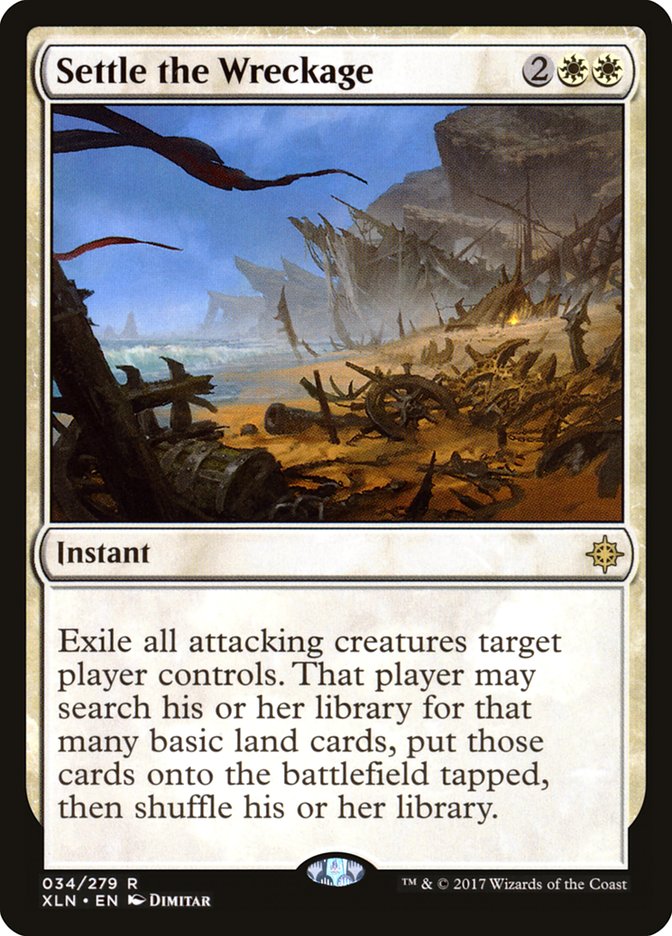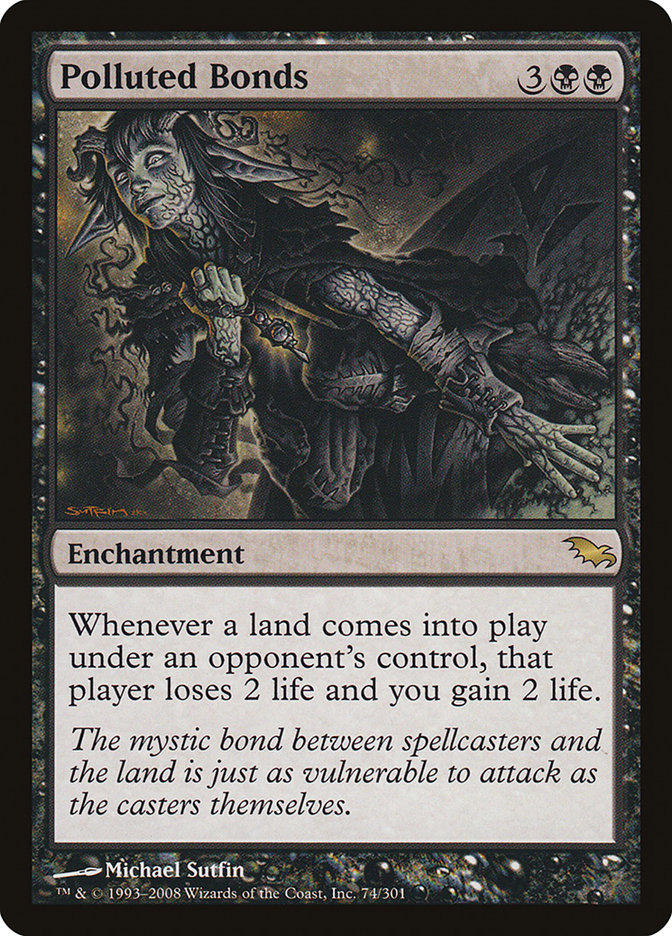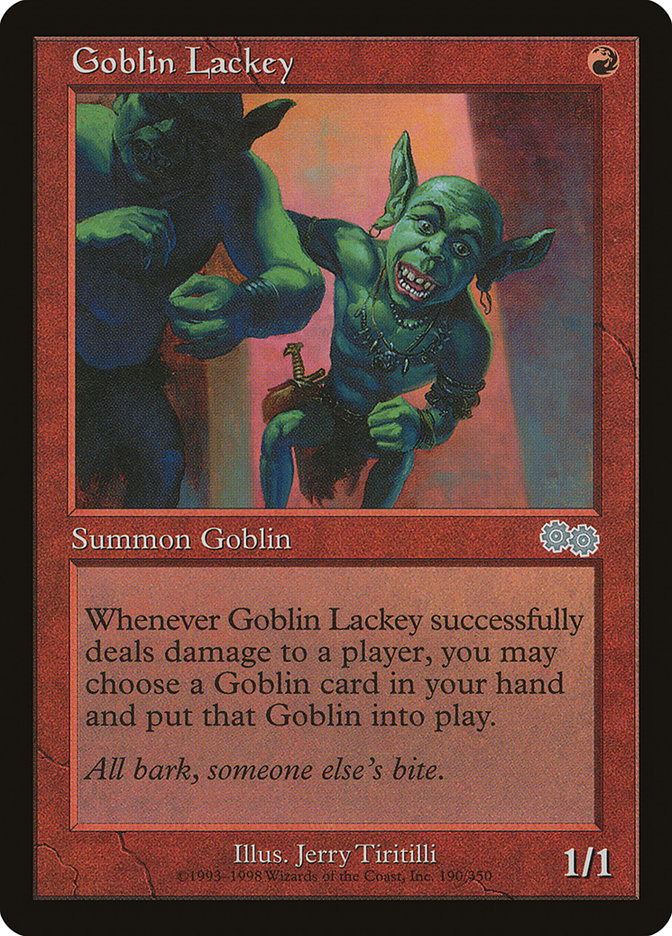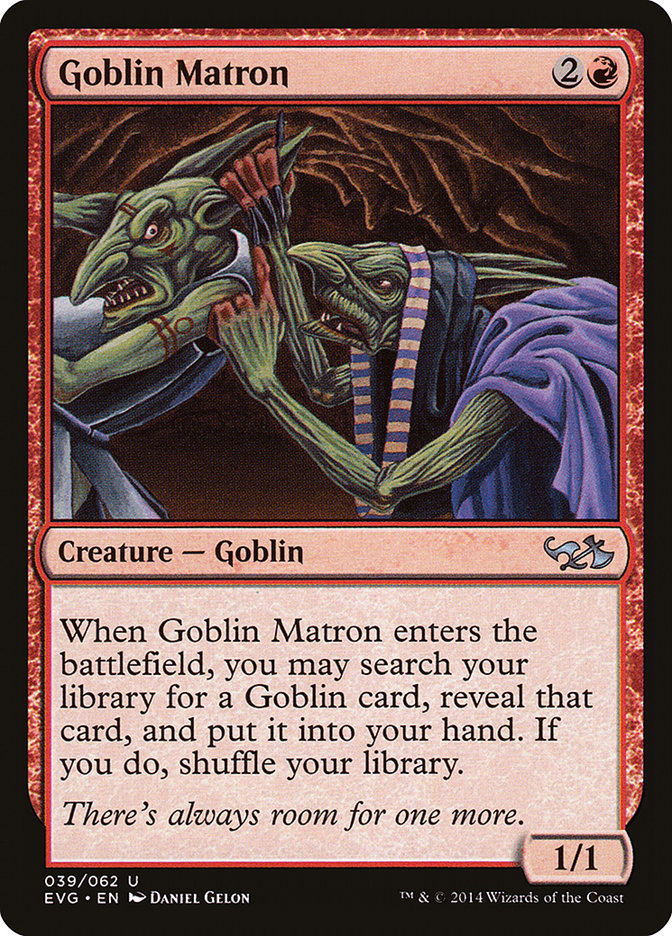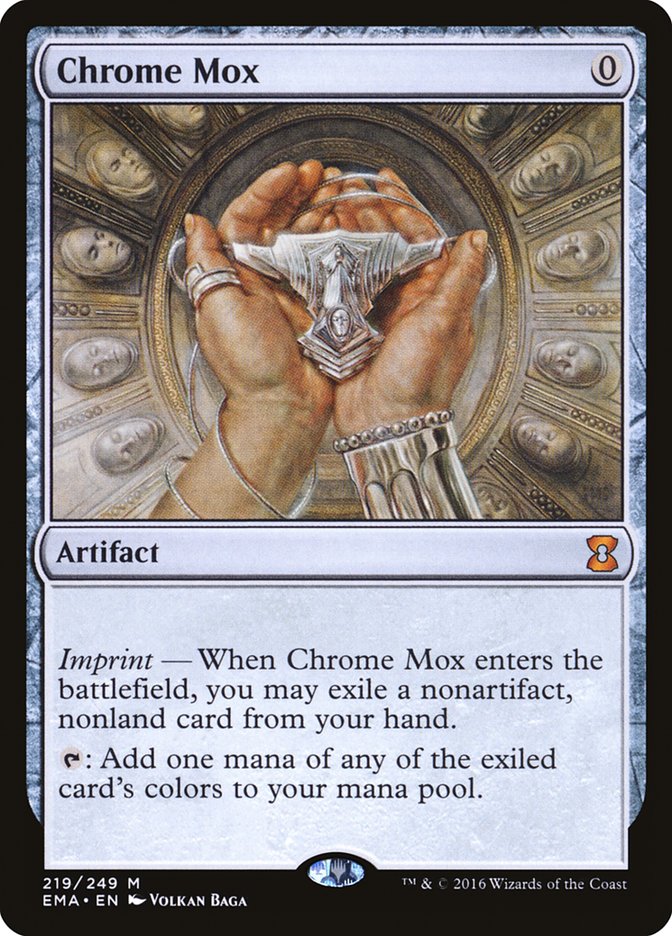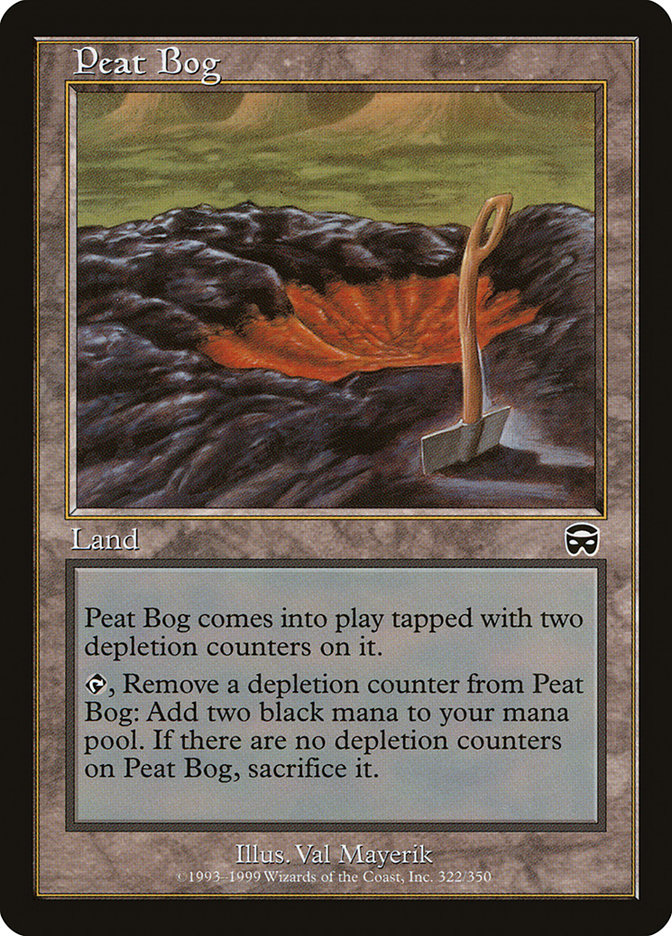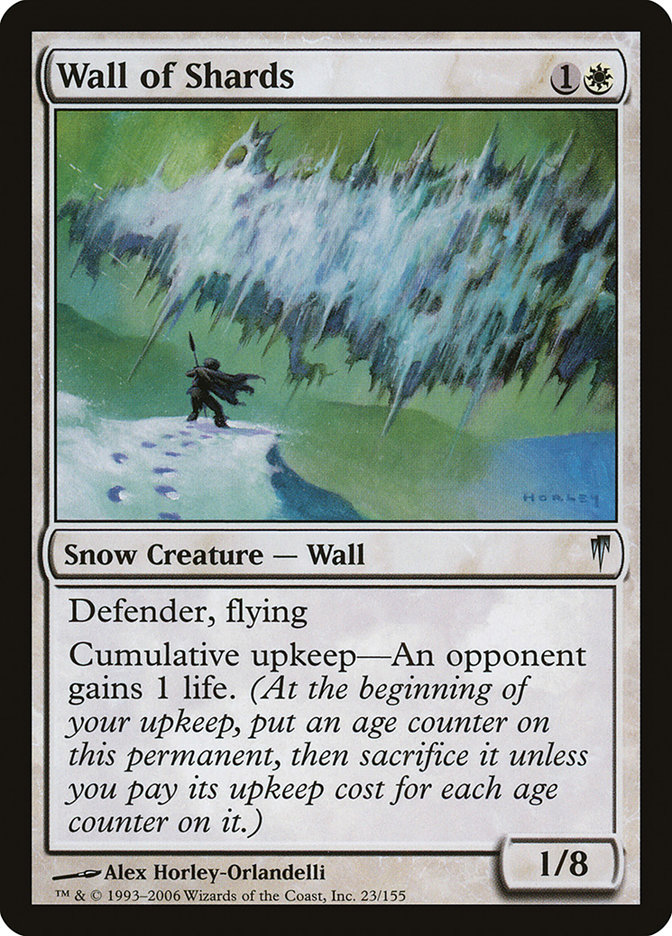Can you believe that we’ve already got a brand new addition to the Standard
format? It feels like Dominaria is still just a few weeks old.
Maybe it’s the summer heat talking or just the fact that I’m getting older,
but 2018 really feels like it’s flying by.
Set releases generally lead to major market fluctuations. New decks emerge,
old decks fall away, and a lot of money is gained and lost in the shuffle.
But is Core Set 2019 going to create that kind of impact? And even
if it does, how much will prices be affected considering how close we are
to this autumn’s major Standard rotation? In order to find out, I’ve asked
myself five key questions about the current state of Standard finance.
#1) Which cards From Core Set 2019 are the Real Deal?
This is always the biggest question when a new set comes out, isn’t it?
Unfortunately, with Core Set 2019, it’s still too early to say
with any degree of certainty.
First off, the big Standard event of the weekend (SCG Worcester) was Team
Constructed instead of straight-up Standard. Some data is certainly better
than no data, but the Magic community is already prone to overreacting
based on week one’s tournament results. Remember when it looked like Lyra
Dawnbringer might be the best card in Dominaria? That’s the sort
of thing that happens when we’ve only got a couple of matches under our
belts.
The problem with reading too much into the #SCGWOR results is that the
Standard data is all mixed in with a bunch of Legacy and Modern stuff, and
the true best Standard deck of the weekend might have gone 0-2 drop thanks
to poor Eternal play.
That said, once we combine the Worcester results with
the trickle of MTGO 5-0 data we’ve been given so far
, a few worthwhile trends begin to emerge.
First off, B/U Control and Grixis Control are all over the place. I don’t
have enough data to say which lists are better than others or how many
copies of Nicol Bolas, the Ravager are in them, but it does appear as
though the community is doing what they can to make Nicol Bolas happen.
Does this mean that Nicol Bolas is for sure good? No. When Rivals of Ixalan came out, for example, there were plenty of
copies of Kumena, Tyrant of Orazca kicking around on week one before
disappearing more or less forever. Nicol Bolas, the Ravager was yesterday’s
top Standard faller on MTGO, which is kind of a bad sign. I still like the
card, but the jury is very much out at this point.
If Grixis or B/U Control end up being good, then surely there will be a
place in the format for Mono-Green Aggro. Andrew Jessup had a great
tournament with his version of the deck, featuring a playset of Core Set 2019 rare Thorn Lieutenant and two sideboard copies of
Vivien Reid. I was a big fan of Thorn Lieutenant
in my set review
, and I still think that the card is very good. I’d pick up a set ASAP.
The key to this deck is Vine Mare, which gives the deck game against B/U
and Grixis Control; it was already good against red-based aggro. While Vine
Mare is an uncommon and thus not liable to jump all that high, it’s
certainly worth snagging out of your Prerelease bulk and throwing in your
binder. Also, it might lead to secondary spikes for all the other good
mono-green cards: Steel Leaf Champion, Ghalta, Primal Hunger, etc.
Lastly, Vivien Reid looks like she’ll play an important role in this deck
going forward. I still feel like this is a pretty mediocre planeswalker in
a vacuum, but that doesn’t mean it’s not an effective two-of or three-of
out of a sideboard. I don’t think that we’re looking at the next $35 chase
mythic, but a stable $15-$20 isn’t out of the question.
There are a few other Core Set 2019 cards that I’m taking a close
look at right now:
Zombies has started to make its presence felt online, at least somewhat. I
have no idea how good the deck is, but these feel like the two cards that
stand to gain the most value if it puts up a couple of high finishes over
the next several weeks.
There’s a fun R/G Midrange deck running around featuring this spell, which
could maintain a $5 price tag if it ends up being a legitimate player in
the new format.
This powerful planeswalker is at least a two-of in the W/B Knights builds
I’ve seen so far. Much like with Zombies I’m not sure if this deck is
destined for the top of the metagame or not, but it’s worth keeping an eye
on.
Sarkhan started gaining a bit on MTGO yesterday, which tells me that there
might be something here. There’s a 5-0 deck in that MTGO dump featuring
three copies of Sarkhan alongside Demanding Dragon and Glorybringer, so
there might be something here.
#2) Which Hyped Cards From Core Set 2019 have No-Showed so far?
This is an even harder question to answer than the last one was, because I
just know that as soon as I submit this article to my editor, some
crazy new deck will emerge on stream at SCG Worcester or on MTGO that will
make my assertions here seem naive and foolish. Oh well.
Based on what I’ve seen so far, Tezzeret, Artifice Master and Resplendent
Angel are making me the most nervous. Remember: there’s a lot of
value in Core Set 2019, so whatever chase mythics don’t end up
seeing play are likely going to crash pretty hard. I’m not seeing too many
winning lists featuring either Tezzeret or Resplendent Angel right now,
which is a pretty major red flag. We might not know how good Nicol Bolas
actually is, but at least we’re seeing people give the card a shot. Even
though it’s possible that someone will develop a tier one Tezzeret deck
between now and next weekend, the odds are against it at this point. I’m
selling.
#3) Will Standard Experience a Price Resurgence Before Set Rotation?
On October 5th, Kaladesh, Aether Revolt, Amonkhet, and Hour of Devastation will finally leave
Standard for good. Assuming that you’re reading this on the date it was
published, that means that we’ve still got 81 days left in the current
Standard format. That’s eleven FNMs, a Pro Tour, and more than two months
left of major tournament action.
81 days is not a short amount of time. Heck, we’re only at the start of
baseball’s All-Star break, and October 5th is right around the time when
the playoffs will begin.
And yet, I suspect that many of you are holding off on dipping into
Standard until the fall rotation regardless. It happens every year, and I
don’t blame anyone for choosing to wait. The format is going to change
significantly with the loss of Kaladesh and Amonkhet
blocks, making it almost certain that whatever deck you buy now will not
survive rotation.
While most late summer Standard environments have proven to be lame ducks,
a few have shown signs of financial life. It usually takes a pretty diverse
and unique metagame, though. If the format seems wide open, players are
always more willing to take the risk and buy in. On the other hand, if
players feel like they must beat the same tired old strategy over and over
again, they’re far more likely to hold off until the fall.
The other key sign for a healthy summer Standard market? A preponderance of
decks that are primarily made up of recently-printed cards. Even if the
October metagame is entirely different from the July metagame, it’s always
more palatable to buy cards that aren’t about to rotate than cards that
are. If all the good decks require a bunch of cards from the rotating sets,
fewer people are likely to invest than if the format has been upended by a
bunch of fresh tech. Plus, who wants to play with or against a bunch of
stale, two-year-old strategies anyhow?
On the first point, I have hope that this current Standard format will end
up being quite good. There are a lot of interesting decks floating around
right now, and at the very least it looks like the Mono-Red and R/B Aggro
decks that dominated Pro Tour Dominaria are no longer nearly as
oppressive as they were. The fact that The Scarab God is all over the place
again is more than a little frustrating, but it looks like you might be
able to play aggro, control, midrange, and even (kind of) combo with
God-Pharaoh’s Gift. What’s not to love?
Well, the real problem here is that Kaladesh block is the most
powerful of the four blocks currently in Standard, and it’s also the
oldest. This will lead to a very exciting set rotation in a couple of
months, but it’s going to be a bit of slog to get there. This is also a
very large Standard environment, which means that every additional set is
going to impact the format less.
While it’s possible that there will be a couple of Standard spikes over the
next couple of months, I doubt we’ll see the kind of movement that we did
when Dominaria hit shelves back in the spring. I expect a bear
market until the start of Guilds of Ravnica preview season.
#4) When Should we Buy Into Standard for the Fall?
Did you know that the lowest point in the contiguous United States is less
than 90 miles from the highest point in the contiguous United States? It’s
true. In fact, if there wasn’t another mountain range in the way, you’d be
able to see the bottom of Death Valley from the top of Mount Whitney.
I like to use this analogy when I talk about the Standard market. Prices
are at their lowest in August, but by mid-October many Standard cards will
reach their yearly highs. Even though we don’t know what the new metagame
is going to look like, buying in over the summer is almost always a
worthwhile play.
But when should you actually buy in? Well, last summer, the
Standard market bottomed out on the last weekend in August. Prices weren’t
all that much lower at the end of August than they were in mid-July,
though, which meant that there was a nice long window for everybody to make
their spec purchases at or near the bottom of the market.
This summer, things are a bit different. The Standard index peaked at
$1,160 back in early May (according to MTG Goldfish, at least) and it’s
been steadily declining since then. The index is at $985 right now, which
is a drop of about 15% in about two months. That figure doesn’t seem like
much until you remember that the index includes a bunch of $0.25 cards that
can’t drop any further because they’re already bulk rares. If we were to
measure an index of only “useful” Standard cards, we’d probably find a
two-month collapse closer to 30%.
And not only is the Standard index still dropping, it’s also still quite a
bit higher than it was last summer; this July’s $985 is quite a bit larger
than last July’s $570. Granted, last summer’s index had fewer cards and
more Masterpieces to help depress the value of those sets, but there’s
still more room for cards to drop this time around.
All this metadata is telling us to wait, but a slightly different story
begins to emerge when you start examining individual prices. For example,
Karn, Scion of Urza lost $27 from May 15th through July 4th. From the 4th
through the 16th, however, Karn has been completely stable.
Eleven days is a large enough sample size to make me believe that Karn,
Scion of Urza has probably reached its seasonal low. While it’s probably
safe to wait until late August to buy in-and indeed, I’ll likely write a
seasonal buying guide to cover this stuff in a couple of weeks-picking your
Karns up now is probably also fine. At the very least, it’s time to start
looking for deals.
#5) What Standard Staples Should we Buy?
Just about the only cards not worth touching right now are the case cards
from Core Set 2019. That set still needs a couple of weeks for the
hype to die down. You can still buy underrated role-players from Core Set 2019-your Thorn Lieutenants and such-but I wouldn’t snag
Nicol Bolas yet unless you really want to play with him right
away.
Everything else is fair game. Personally, I like to focus on high-end
staples that are almost certainly going to be useful in the next iteration
of the format.
Here are a couple of cards that I’ll be looking to pick up at some point
over the next month:
Karn is such a versatile role-player that I have no doubt it’ll find a home
or six in the future. It’s still the most expensive card in Standard so
it’s not like you’re getting a massive deal regardless, but I can’t imagine
it’ll get any cheaper once everybody who realizes that they need one in
mid-October starts looking for copies.
This card doesn’t ever seem to drop much below $20 since it sees play in
all three of the Eternal formats as well as Standard. Even if Search for
Azcanta drops toward $8-$10 in a year or so as it approaches rotation, this
is a “buy it for life” kind of card that could end up being a $30-$40 card
in Modern.
This one’ll scoot out of my price range a lot sooner if W/B Knights ends up
taking off, but I have no doubt that this efficient mythic will end up
above $20 again at some point while it’s Standard legal.
This one’s on its way up already thanks to its ubiquity in the current crop
of B/U and Grixis-based control decks. The summer lull hasn’t seemed to
have hurt its price much at all, so I’d consider grabbing your copies
sooner rather than later.
This fantastic white removal spell is only about half as expensive as it
was back in early May, and it appears to have finally bottomed out. If the
format moves back toward white-based control at any point during the next
year, Settle could easily flirt with $20 again.
This Week’s Trends
-
The Modern market has been fairly quiet this summer, with Mox Opal
making some modest gains this week alongside Engineered Explosives
and Liliana of the Veil. Polluted Bonds is also a up a couple of
bucks, likely because some people are trying it out of the
sideboard against Scapeshift. Five mana seems like it’s probably
too much for Modern, but it’s a solid low-supply casual card
regardless.
-
Over in Legacy, some of the key pieces in Death and Taxes are
starting to increase in price. Karakas is about $15 higher than it
was last week, and Containment Priest appears to be on the verge of
a similar spike. Council’s Judgment is up a couple of bucks as
well. Rishadan Port and Wasteland are as-of-yet untouched, but I
still feel like it’s only a matter of time.
Not only is this deck a lot better post-ban, but it’s also one of the
cheapest decks in the entire format. I’m expecting more gains over the next
couple of months, and I’d snag your Death and Taxes staples now if you’re
going to want them.
-
Goblins is the other Legacy deck that seems to be reaping the early
financial benefits of the Deathrite Shaman ban. Goblin Lackey
gained about $10 last week, and even Goblin Matron appears to be
rising above the $0.50 mark where it’s been for years. While I’m
sure that there is some real-world demand here, some key second
level Goblins cards, like Chrome Mox, have yet to spike. This tells
me that a lot of the Lackey action was probably due to speculators,
not people actually looking to build the deck right now. My guess
is that Chrome Mox will gain some value, but Goblin Lackey will
also probably lose some value as investment copies re-enter the
marketplace at the new, higher price point. I’m selling this one
into the spike.
-
Reserved List Enchantress staples are rising as well, likely due to
Commander (rumors about an enchantment-based deck in Commander 2018) as well as Legacy. Femeref Enchantress was
the first to pop, followed by Replenish and Serra’s Sanctum, which
are still in the verge of being bought out again. Opalescence and
Academy Rector could be next. While Enchantress is barely a real
deck in Legacy at this point, Reserved List cards are proving both
durable and safe from too many losses right now. Consider this your
(late) warning if you want any of these cards.
-
There was an interesting Pauper spike this week, as Peat Bog surged
from bulk common prices to just over $3. This is due to a new U/B
Control deck that runs four copies of the land. $3 is totally
reasonable for a choke point Pauper card…as long as the deck is
good. Just be aware that it also runs Fade Away, Icequake, Rancid
Earth, and Choking Sands, all of which are low supply commons as
well. If you’re interested in this sort of high volume Pauper
speculation, you should be targeting all four of those cards as
well.
-
Meanwhile, good defenders continue to be bought out thanks to
Arcades, the Strategist. Wall of Shards was the latest to pop,
jumping all the way up to about $10 this week. The card is from Coldsnap, so it might be able to sustain a $5+ price tag
due to scarcity, but I’m already seeing some downward movement as
peoples’ spec copies re-enter the market.
-
According to the MTG Finance subreddit, there’s been a run on
graded Arabian Nights commons that have scored a 9.5 or
better. This is like what happened to highly graded Alpha
and Beta cards a while back. If you’ve got any flawless
cards from these sets kicking around, consider getting them graded
– the premium is likely to be worth it. Oh-and if you’ve been
waiting to pick up any 9.5 or better commons or uncommons from sets
like Antiquities and Legends, get in now before
those prices start to spike, too.


